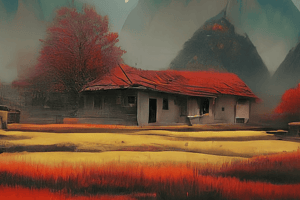Podcast
Questions and Answers
What is the second-lowest place in China?
What is the second-lowest place in China?
- The Himalayas
- The Turfan Depression (correct)
- The Northwest Deserts
- The Northeastern Plain
What is the major region in the southwest of China?
What is the major region in the southwest of China?
- The Northeastern Plain
- The North China Plain
- The Tibet-Qinghai Plateau (correct)
- The Chang Jiang Basins
What is the climate like in the Northeastern Plain?
What is the climate like in the Northeastern Plain?
- Hot summers and long, cold winters (correct)
- Hot summers and short, cold winters
- Hot summers and long, mild winters
- Hot summers and short, mild winters
Flashcards are hidden until you start studying
Study Notes
- Outer China includes the western and northern parts of present-day China.
- This is an area of great extremes in climate and physical features.
- In ancient times, the only livable places in China’s Northwestern Deserts were areas near water.
- In the southwest, China is bounded by the Himalayas.
- The key geographical region in this area is the Tibet-Qinghai (tih-BET ching-HIE) Plateau.
- It is the world's largest plateau.
- In the northwest, the major region is the Northwestern Deserts.
- This area includes the Turfan Depression, which at 505 feet below sea level, is the second-lowest place in China.
- It can grow so hot here that raindrops evaporate before even reaching the ground.
- In the northeast, the key region is the Northeastern Plain, a land of low hills and plains.
- It has short, hot summers, but winters are long and dry, with five months of freezing temperatures.
- The Geography of Inner China includes the southeastern part of present-day China and is closer to sea level than the western areas.
- Inner China has two main regions.
- The northern region is the North China Plain, while to the south are the low river plains of the middle and lower Chang Jiang (chahng jyahng) Basins.
- Each of China's five major regions has its own climate, physical features, and vegetation.
Studying That Suits You
Use AI to generate personalized quizzes and flashcards to suit your learning preferences.




